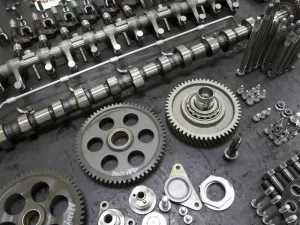How to Break Into the Auto Parts Business

A successful auto parts business will thrive on repeat business and word-of-mouth advertising. But it isn’t always easy to break into an established market. You must consider the size and income levels of your target market to ensure your success. Here are some tips to help you start your own business:
The industry is dominated by multinational companies, but some local suppliers are also active. The biggest three automakers collectively source over ninety percent of their parts from outside the U.S. and Canada. This is significant as automakers must maintain a stable supply of these parts to keep vehicles on the road. But what about other suppliers? The industry is facing a growing number of challenges. The future of the automotive industry is uncertain. But there are steps you can take today to increase your profit margin.
Besides the mechanical parts, automobiles also have many interior components, including seats, instrument panels, HVAC systems, and wiring. These parts connect together with each other and serve as the building blocks of the car. Throughout history, the automobile industry has used raw materials from all over the world to produce the components needed for cars. Common materials include steel, rubber, aluminum, and plastics. Oil is also used to manufacture these materials. There are over 500,000 companies involved in the global auto parts industry.
Aftermarket and OEM parts differ in quality and price. Aftermarket auto parts are not original equipment manufacturer (OEM) parts and may not fit damaged body panels. Also, installing aftermarket auto parts may void your lease vehicle warranty. Always use original manufacturer parts if you’re still under the lease. For the sake of safety, you should avoid installing non-OEM auto parts. You’ll also have to pay more for collision repair, which can be expensive.
Auto parts imports have increased dramatically over the last decade. Japan, the world’s leading vehicle and parts manufacturer, ranks 14th in the list of importers. Although Japan relies on the domestic auto parts industry, it still has a keiretsu structure which enables manufacturers to have exclusive relationships with suppliers. In 2006, U.S. auto parts exports reached $58.9 billion while its imports accounted for the trade deficit of the automotive industry.
Major suppliers are largely independent producers that provide the automotive components used in cars. The largest two auto parts suppliers, Delphi Automotive Systems and Visteon Corporation, were spun off from their parent companies. As of 2004, there were approximately 1,500 to 2,000 major Tier 1 suppliers that sold directly to vehicle builders. However, that number is predicted to decrease to about 500 to 700, and the top fifty will be system integrators dealing directly with the vehicle manufacturers.
Automotive electronics and the internet have become the fastest-growing distribution channel in the automotive industry. It is projected to grow even further in the next five years. For instance, e-commerce sales of auto parts are now the largest segment of the industry, with a share of nearly one-third of the global market. These trends are expected to continue through 2020. So, don’t wait any longer to start your online auto parts business. There is no better time than now.







